On November 22 last year, Chip Intelligence published an article titled “The Future of TWS Headphones: Bluetooth BLE Audio is Coming, Will Mobile Giants Dominate?” which first exposed the upcoming release of the new Bluetooth BLE Audio standard by the Bluetooth Special Interest Group (Bluetooth SIG), while also introducing how this standard will drive the true wireless Bluetooth headphone (TWS headphone) market.
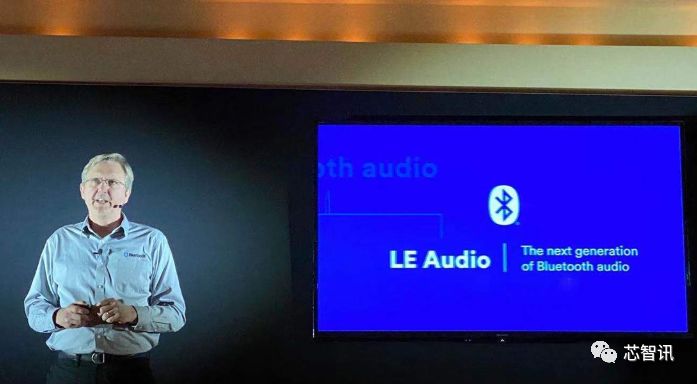
▲Ken Kolderup, Vice President of Marketing at Bluetooth SIG
On January 6, 2020, local time in the United States, the Bluetooth SIG held a press conference at CES 2020 in Las Vegas, officially launching the next-generation Bluetooth wireless audio standard, Bluetooth LE Audio.
As we all know, the previous classic Bluetooth (Bluetooth Classic) wireless audio transmission was the classic Bluetooth audio (Classic Audio), while Bluetooth LE Audio, as the name suggests, is low-energy Bluetooth audio, which will not only support the development of audio products and use cases similar to Classic Audio but also introduce exciting new features that are expected to improve performance and enable the creation of new products and use cases.
Bluetooth LE Audio fully supports the Bluetooth 5.1 standard and the next generation Bluetooth LE’s ISOC (isochronous) architecture, bringing innovative solutions to the TWS headphone market and accelerating its explosion.
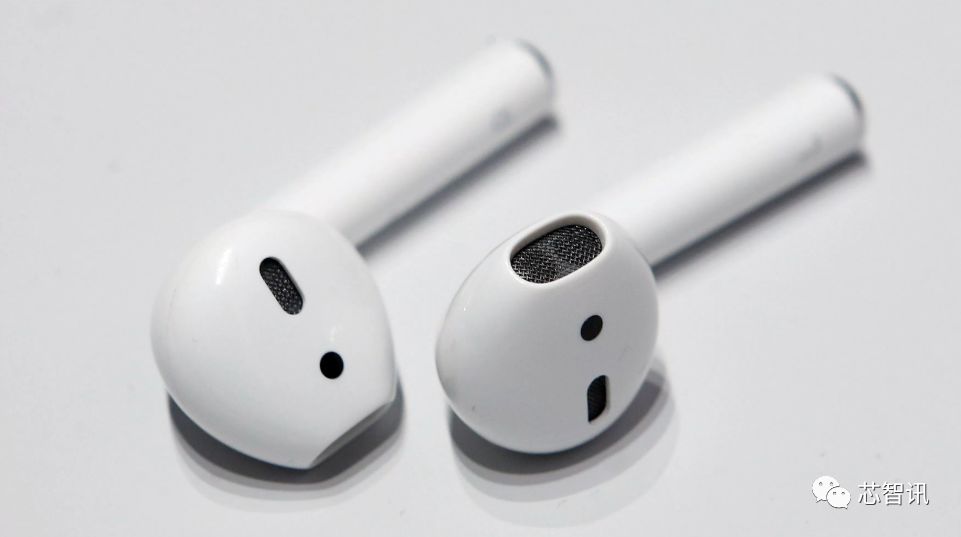
Now let’s take a look at the specific new features and improvements of Bluetooth LE Audio:
1. Wireless Multi-Stream Direct Connection
Currently, many TWS headphones use an asynchronous transmission scheme for the left and right headphones, mainly including two options: 2.4GHz Bluetooth signal forwarding and LBRT magnetic induction forwarding.
Regardless of the forwarding scheme, it results in greater power consumption for the primary earphone, leading to faster battery depletion. Once the primary earphone stops working, the secondary earphone will also be unusable. Additionally, there are issues with connection stability and latency.
Therefore, compared to TWS connection schemes that require distinguishing between primary and secondary earphones, a solution that allows sound signals to be transmitted simultaneously to the left and right ear units, without differentiating between primary and secondary earphones, can effectively avoid signal loss, reduce latency, and improve connection stability, providing a better user experience.
The previous non-primary-secondary earphone TWS connection schemes mainly include: Apple’s monitoring scheme and Qualcomm’s dual connection scheme. At the same time, some other chip manufacturers in the market have begun to explore alternative paths to achieve the “dual transmission” effect without distinguishing between primary and secondary earphones through other technical solutions.
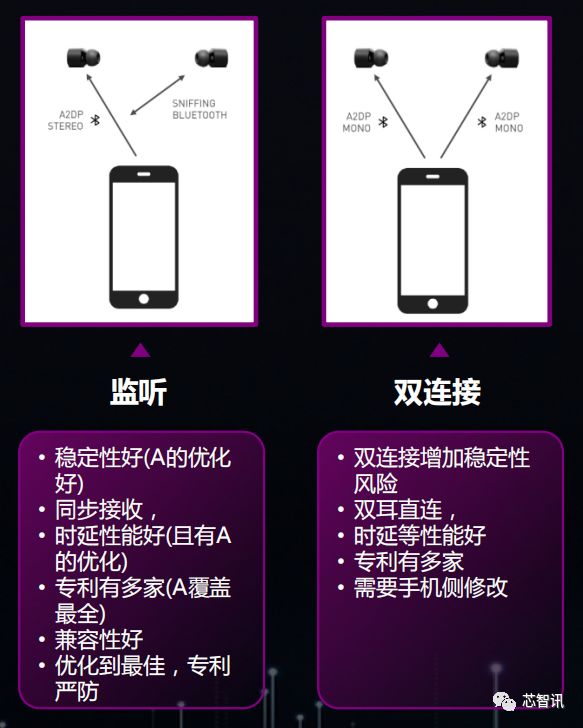
However, there are several issues involved. One is the patent issue; relatively speaking, audio technology giants like Apple and Qualcomm have already accumulated many technical patents on audio transmission schemes that do not distinguish between primary and secondary earphones, and other similar schemes may face patent risks. Another issue is that various chip manufacturers are competing independently, and there is no unified Bluetooth audio transmission standard that does not distinguish between primary and secondary earphones, which will cause compatibility issues for TWS headphones, as many schemes require support from the mobile end, especially when cross-chip platform compatibility is challenging. For example, TWS headphones based on Qualcomm chips may not be compatible with smartphones using Apple or Huawei HiSilicon chips.
Clearly, these issues hinder the development of the TWS headphone market.
As previously forecasted by Chip Intelligence, Bluetooth LE Audio introduces a new Multi-Stream Audio feature that allows a single audio source device to synchronize multiple independent audio streams to one or more audio receiving devices.

In other words, Bluetooth LE Audio not only thoroughly resolves the standard and compatibility issues of TWS headphones’ dual-ear direct connection but also allows a single audio source to connect to multiple wireless audio receiving devices.
Nick Hunn, Chair of the Bluetooth SIG Hearing Aid Working Group and CTO of WiFore Consulting, stated: “For products like true wireless in-ear headphones, developers will be able to utilize the Multi-Stream Audio feature to enhance performance. For example, Multi-Stream Audio can provide a better stereo experience, make the use of voice assistant services more seamless, and allow smoother switching between multiple audio source devices.”
2. Support for Broadcast Audio
Additionally, Bluetooth LE Audio has introduced Broadcast Audio technology, enabling audio source devices to broadcast one or more audio streams to an unlimited number of audio receiving devices. The addition of Broadcast Audio technology also provides important new opportunities for innovation, including enabling new Bluetooth use cases like “Audio Sharing.”
According to reports, Bluetooth audio sharing based on Broadcast Audio technology can be personal or location-based. Through Bluetooth audio sharing, people will be able to share the Bluetooth audio experience with others around them; for example, sharing music from a smartphone with family and friends. Location-based audio sharing is suitable for public places such as airports, bars, stadiums, cinemas, and conference centers.
Peter Liu, a board member of the Bluetooth SIG and head of Bose, stated: “Location-based audio sharing is expected to change the way we experience environments. For example, in public places, even if the television is muted, people can still receive the television audio signal through broadcast audio, while venues like theaters and lecture halls will be able to share audio, even providing assistance for hearing-impaired visitors, with multilingual options available.”
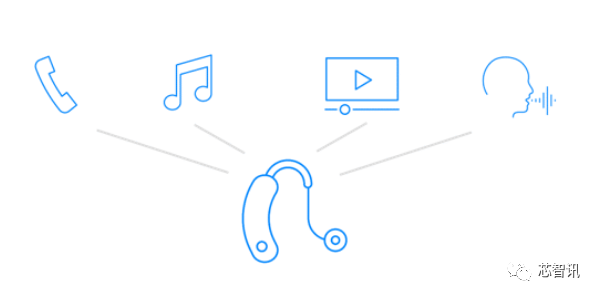
Stefan Zimmer, Secretary-General of the European Hearing Instrument Manufacturers Association, stated: “LE Audio will drive the development of Bluetooth hearing aids, bringing all the benefits of Bluetooth audio to an increasing number of people with hearing loss. LE Audio will be one of the most significant advancements for hearing aids and their users.”
Ken Kolderup, Vice President of Marketing at Bluetooth SIG, also stated that the design of the LE Audio specification fully supports hearing aid development standards. Kolderup expects that products compatible with the LE Audio standard will emerge in the second half of 2020 and that the LE Audio listening options will be integrated into venues within the next three years.
3. New Audio Codec LC3
For TWS headphones, the primary function is to receive audio, and the quality of audio directly affects user experience. Currently, the most widely used audio codec formats in classic Bluetooth are SBC, AAC, and APTX.
SBC is the mandatory codec format specified by the Bluetooth audio transmission protocol; all Bluetooth audio chips will support this protocol, but the bitrate is only 320kbps, and since the Bluetooth transmission intermediate device requires transcoding, each transcoding will lose details, resulting in the sound quality of SBC being significantly worse than the original MP3.
In contrast, Apple’s preferred AAC and Qualcomm CSR’s APTX, as well as Sony’s LDAC, although providing better sound quality, are not universally available for other Bluetooth audio chip manufacturers; similarly, TWS headphone brand manufacturers seeking to provide better sound quality mostly have to choose Qualcomm’s chip solutions.
Thus, for other TWS headphone brand manufacturers, apart from Qualcomm, the options for high-quality Bluetooth audio technology solutions are quite limited, which has somewhat hindered the improvement of sound quality in TWS headphones.
The newly released Bluetooth LE Audio integrates a new high-quality, low-latency, and low-power audio codec, LC3.
According to reports, LC3 has a sampling rate of 8, 16, 24, 32, 44.1, and 48 kHz, with a bitrate of 16-320 kbps and a frame length of 7.5 and 10 ms. It has the characteristic of providing high sound quality even under low data rate conditions, offering developers great flexibility to better balance key product attributes like sound quality and power consumption during product design.
According to the standard stereo test data provided by the Bluetooth SIG and Fraunhofer IIS (the contributor of LC3 codec technology), LC3 can provide better sound quality compared to the SBC codec of Classic Audio, even maintaining high sound quality with a 50% reduction in bitrate.
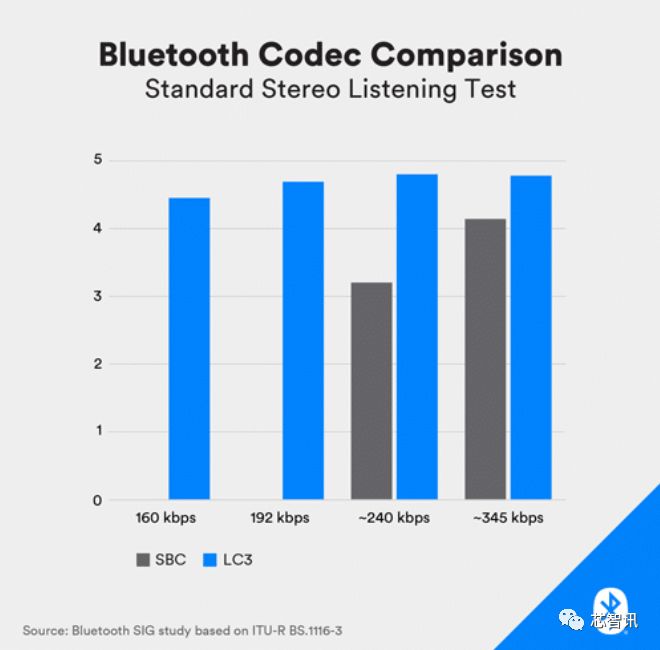
Manfred Lutzky, Head of Communication Audio at Fraunhofer IIS, stated: “Developers will be able to leverage this advantage to create products with longer battery life or optimize product design size by using smaller batteries while meeting current power consumption requirements.”
It is worth mentioning that Fraunhofer IIS from Germany is not only the contributor of the LC3 codec technology for Bluetooth LE Audio but also a contributor to MP3/AAC technology.
In addition to LC3, which has become the mandatory codec for Bluetooth LE Audio, Fraunhofer IIS has also launched a standardized solution called LC3plus, which has more advantages based on LC3.
Zou Ji, Technical Sales Manager of Fraunhofer IIS China, told Chip Intelligence: “LC3plus is an extension of LC3, which, based on all functions of LC3, also has extremely high transmission robustness, very low latency, and high-resolution audio transmission capabilities.
1. To improve robustness, LC3plus includes very high-performance packet loss concealment algorithms and forward error correction schemes such as channel coding or redundant frame modes.
2. The codec can operate in several low-latency modes, with frame length latency as low as 5ms for 2.5ms frame lengths.
3. LC3plus’s dedicated high-resolution audio mode can provide high-quality audio up to 24bit and 96kHz, making it an open standard audio codec very suitable for high-quality wireless headphones and high-quality gaming headphones.
Currently, ETSI (European Telecommunications Standards Institute) has standardized the LC3plus as TS 103634, and by incorporating it into the 2019 DECT standard, it has brought ultra-wideband voice/audio quality to DECT. Its wideband capacity is twice that of the previous standard. The LC3plus channel coding designed specifically for DECT channel characteristics allows LC3plus payloads to be transmitted over severely distorted DECT channels, enabling calls even when the mobile phone is far from the base station without interruption.
Zou Ji told Chip Intelligence: “Although LC3 has become the mandatory codec for Bluetooth LE Audio, it can be obtained from us for Bluetooth-related LC3 SDKs. Manufacturers with higher audio quality requirements can also choose LC3plus.”
Zou Ji stated: “The LC3 standard is expected to be released in the first half of 2020, and Fraunhofer IIS will provide development codes to the industry as soon as possible. Currently, Cadence and Synopsys have launched related products. Manufacturers with higher requirements for sound quality, latency, and transmission are also welcome to choose LC3plus.”
Conclusion:
As previously introduced by Chip Intelligence, the issues currently faced by many TWS headphones, such as asynchronous transmission between primary and secondary earphones, poor sound quality, poor compatibility, and high power consumption, have constrained the enhancement of TWS headphone experiences and the development of the TWS headphone industry. The introduction of the new Bluetooth LE Audio standard largely resolves this series of issues. This has also attracted many chip manufacturers to follow suit promptly.
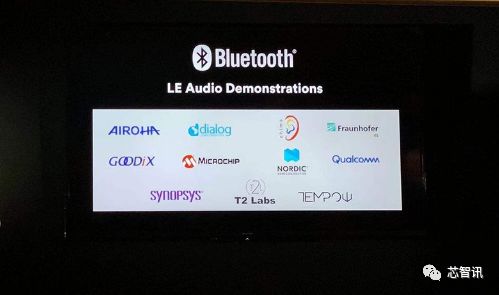
Currently, major Bluetooth chip manufacturers such as Airoha, Dialog, Goodix Technology, Microchip, Nordic, and Qualcomm are about to launch Bluetooth chips that support the Bluetooth LE Audio standard.
It is worth noting that at CES 2020, Goodix Technology also partnered with OnePlus Technology to demonstrate the Bluetooth LE Audio solution applied to TWS true wireless headphones for the first time.
However, it should be noted that even if manufacturers launch TWS headphones based on the Bluetooth LE Audio standard, the transmitting end must support the Bluetooth LE Audio standard. Therefore, the large-scale commercial time point for products based on the Bluetooth LE Audio solution should be in the second half of this year.
Currently, TWS headphones have become a trend to replace traditional mid- to low-end wired headphones, especially with the strong push from upstream chip manufacturers and numerous downstream mobile giants, the experience of TWS headphones has rapidly improved, and costs are accelerating downwards.
Chip Intelligence still adheres to the previous judgment that we believe TWS headphones are likely to become standard accessories for smartphones, fully replacing the wired headphones that were previously included as standard accessories in smartphones. This also means that the TWS headphone market still has nearly ten times the growth space. With the launch of the Bluetooth LE Audio standard, which can effectively resolve many existing experience issues with TWS headphones, it will undoubtedly accelerate this process. Additionally, the application of Bluetooth LE Audio’s new audio broadcast function will further expand the application range of TWS headphones.
Editor: Chip Intelligence – Wandering Sword
Source:
Bluetooth Alliance Official Website:
https://www.bluetooth.com/learn-about-bluetooth/bluetooth-technology/le-audio/
Fraunhofer IIS Official Website:
https://www.iis.fraunhofer.de/en/ff/amm/communication/lc3.html
The U.S. Intervenes to Block, Has SMIC’s EUV Lithography Machine Failed?
Aerospace Communication’s 4.5 Billion Shocking Thunder Behind:Deep Throat Reveals Mysterious “C Single Business” Fraud
The U.S. Restricts Geospatial Image AI Software Exports to China:Drone and Autonomous Driving Industries Will Be Affected!
Huawei Invests 10 Billion? Accelerating Open “Little HiSilicon” Still Faces Unsolvable Problems!
Entry Price Drops to 299,000 Yuan! Domestic Tesla Model 3 Supply Chain Revealed
Self-developed GPU Setback? Apple Reaches New Licensing Agreement with Imagination
Japan Develops 6G Chip with Transmission Rate Up to 100Gbps!
Policy Ignites Tire Pressure Monitoring Market, Domestic TPMS Chips Welcome New Opportunities!
Intense Competition in 5G Smartphone Market, Global Five Major 5G Chip Manufacturers Fully Engage!
For industry communication and cooperation, please add WeChat: icsmart01Chip Intelligence Official Group: 221807116